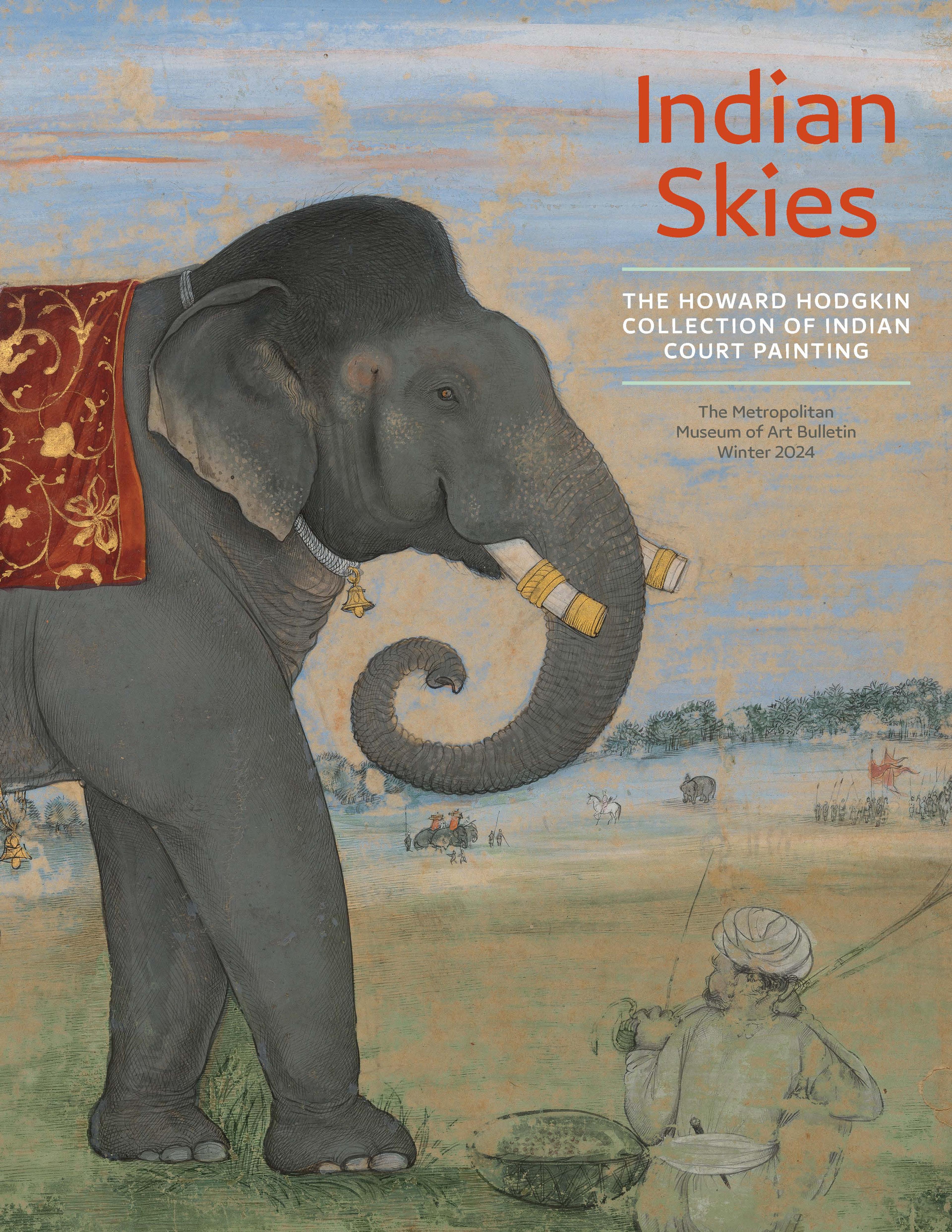Sultan Muhammad 'Adil Shah and Ikhlas Khan Riding an Elephant
This painting depicts Sultan Muhammad ‘Adil Shah of Bijapur, and his prime minister, Ikhlas Khan. They sit together on a striding elephant, with Ikhlas Khan riding behind the Sultan, positioned in an emblematic display of the real power behind the throne. The double portrait of these two eminent figures from the Deccan is enhanced by the signature of the two artists who completed the work—Haidar ‘Ali and Ibrahim Khan, who signed their names at left.
Artwork Details
- Title: Sultan Muhammad 'Adil Shah and Ikhlas Khan Riding an Elephant
- Artist: Haidar 'Ali (Indian)
- Artist: Ibrahim Khan (Indian)
- Date: ca. 1645
- Geography: Made in India, Deccan, Bijapur. Country of Origin India
- Medium: Ink, opaque watercolor, and gold on paper
- Dimensions: Frame: 17 3/16 × 22 3/16 × 3/4 in. (43.6 × 56.3 × 1.9 cm)
Image: 11 1/4 × 12 5/8 in. (28.6 × 32 cm) - Classification: Codices
- Credit Line: Howard Hodgkin Collection, Purchase, Florence and Herbert Irving Acquisitions, Harris Brisbane Dick, and 2020 Benefit Funds; Howard S. and Nancy Marks, Lila Acheson Wallace, and Friends of Islamic Art Gifts; Louis V. Bell, Harris Brisbane Dick, Fletcher, and Rogers Funds and Joseph Pulitzer Bequest; and funds from various donors, 2022
- Object Number: 2022.198
- Curatorial Department: Islamic Art
More Artwork
Research Resources
The Met provides unparalleled resources for research and welcomes an international community of students and scholars. The Met's Open Access API is where creators and researchers can connect to the The Met collection. Open Access data and public domain images are available for unrestricted commercial and noncommercial use without permission or fee.
To request images under copyright and other restrictions, please use this Image Request form.
Feedback
We continue to research and examine historical and cultural context for objects in The Met collection. If you have comments or questions about this object record, please contact us using the form below. The Museum looks forward to receiving your comments.
